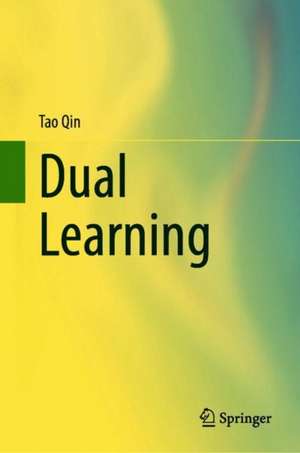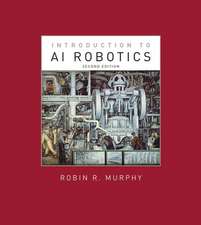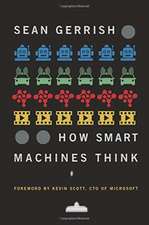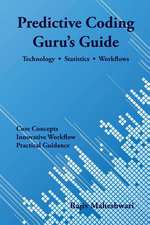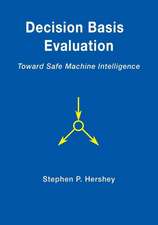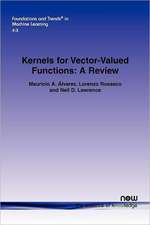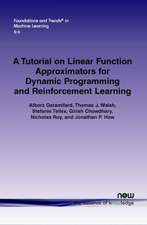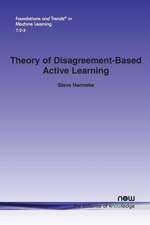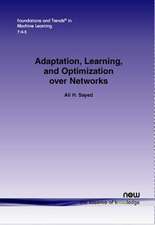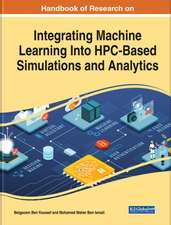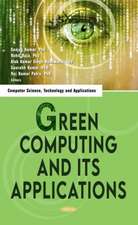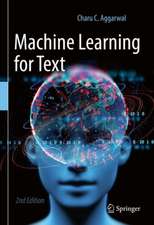Dual Learning
Autor Tao Qinen Limba Engleză Hardback – 14 noi 2020
Offering a systematic and comprehensive overview of dual learning, this book enables interested researchers (both established and newcomers) and practitioners to gain a better understanding of the state of the art in the field. It also provides suggestions for further reading and tools to help readers advance the area. The book is divided into five parts. The first part gives a brief introduction to machine learning and deep learning. The second part introduces the algorithms based on the dual reconstruction principle using machine translation, image translation, speech processing and other NLP/CV tasks as the demo applications. It covers algorithms, such as dual semi-supervised learning, dual unsupervised learning and multi-agent dual learning. In the context of image translation, it introduces algorithms including CycleGAN, DualGAN, DiscoGAN cdGAN and more recent techniques/applications. The third part presents various work based on the probability principle, including dual supervised learning and dual inference based on the joint-probability principle and dual semi-supervised learning based on the marginal-probability principle. The fourth part reviews various theoretical studies on dual learning and discusses its connections to other learning paradigms. The fifth part provides a summary and suggests future research directions.
| Toate formatele și edițiile | Preț | Express |
|---|---|---|
| Paperback (1) | 641.16 lei 3-5 săpt. | |
| Springer Nature Singapore – 14 noi 2021 | 641.16 lei 3-5 săpt. | |
| Hardback (1) | 646.80 lei 3-5 săpt. | |
| Springer Nature Singapore – 14 noi 2020 | 646.80 lei 3-5 săpt. |
Preț: 646.80 lei
Preț vechi: 808.50 lei
-20% Nou
Puncte Express: 970
Preț estimativ în valută:
123.76€ • 129.57$ • 102.41£
123.76€ • 129.57$ • 102.41£
Carte disponibilă
Livrare economică 15-29 martie
Preluare comenzi: 021 569.72.76
Specificații
ISBN-13: 9789811588839
ISBN-10: 981158883X
Pagini: 190
Ilustrații: XV, 190 p. 52 illus., 24 illus. in color.
Dimensiuni: 155 x 235 mm
Greutate: 0.45 kg
Ediția:1st ed. 2020
Editura: Springer Nature Singapore
Colecția Springer
Locul publicării:Singapore, Singapore
ISBN-10: 981158883X
Pagini: 190
Ilustrații: XV, 190 p. 52 illus., 24 illus. in color.
Dimensiuni: 155 x 235 mm
Greutate: 0.45 kg
Ediția:1st ed. 2020
Editura: Springer Nature Singapore
Colecția Springer
Locul publicării:Singapore, Singapore
Cuprins
Chapter 1. Introduction.- Chapter 2. Machine Learning Basics.- Chapter 3. Deep Learning Basics.- Chapter 4. Dual Learning for Machine Translation and Beyond.- Chapter 5. Dual Learning for Image Translation and Beyond.- Chapter 6. Dual Learning for Speech Processing and Beyond.- Chapter 7. Dual Supervised Learning.- Chapter 8. Dual Inference. Chapter 9. Marginal Probability based Dual Semi-supervised Learning.- Chapter 10. Understanding Dual Reconstruction.- Chapter 11. Connections to Other Learning Paradigms.- Chapter 12. Summary and Outlook.
Notă biografică
Dr. Tao Qin is a Senior Principal Researcher and Manager at Microsoft Research Asia, and an Adjunct Professor (PhD advisor) at the University of Science and Technology of China. He coined the term dual learning together with his colleagues, and has published numerous papers on the topic in Neur IPS/ICLR/ICML/AAAI/IJCAI/CVPR/ACL/EMNLP/NAACL. His research interests include machine learning (with the focus on deep learning and reinforcement learning), artificial intelligence (with applications to language understanding, speech processing and computer vision), game theory and multi-agent systems (with applications to cloud computing, online and mobile advertising, ecommerce), information retrieval and computational advertising.
Dr. Qin has published over 100 refereed papers at prestigious conferences such asNeur IPS, ICML, ICLR, AAAI, IJCAI, AAMAS, ACL, EMNLP, NAACL, KDD, WWW, SIGIR, WSDM, JAIR, EC, WINE, and ACM Transactions. He served/is serving as Area Chair for AAAI, IJCAI, EMNLP, AAMAS, SIGIR and ACML, Workshop Chair for WWW 2020, and Industry Chair for DAI 2019. He is a Senior Member of the IEEE and ACM.
Dr. Qin has published over 100 refereed papers at prestigious conferences such asNeur IPS, ICML, ICLR, AAAI, IJCAI, AAMAS, ACL, EMNLP, NAACL, KDD, WWW, SIGIR, WSDM, JAIR, EC, WINE, and ACM Transactions. He served/is serving as Area Chair for AAAI, IJCAI, EMNLP, AAMAS, SIGIR and ACML, Workshop Chair for WWW 2020, and Industry Chair for DAI 2019. He is a Senior Member of the IEEE and ACM.
Textul de pe ultima copertă
Many AI (and machine learning) tasks present in dual forms, e.g., English-to-Chinese translation vs. Chinese-to-English translation, speech recognition vs. speech synthesis,question answering vs. question generation, and image classification vs. image generation. Dual learning is a new learning framework that leverages the primal-dual structure of AI tasks to obtain effective feedback or regularization signals in order to enhance the learning/inference process. Since it was first introduced four years ago, the concept has attracted considerable attention in multiple fields, and been proven effective in numerous applications, such as machine translation, image-to-image translation, speech synthesis and recognition, (visual) question answering and generation, image captioning and generation, and code summarization and generation.
Offering a systematic and comprehensive overview of dual learning, this book enables interested researchers (both established and newcomers) and practitioners to gain a better understanding of the state of the art in the field. It also provides suggestions for further reading and tools to help readers advance the area. The book is divided into five parts. The first part gives a brief introduction to machine learning and deep learning. The second part introduces the algorithms based on the dual reconstruction principle using machine translation, image translation, speech processing and other NLP/CV tasks as the demo applications. It covers algorithms, such as dual semi-supervised learning, dual unsupervised learning and multi-agent dual learning. In the context of image translation, it introduces algorithms including CycleGAN, DualGAN, DiscoGAN cdGAN and more recent techniques/applications. The third part presents various work based on the probability principle, including dual supervised learning and dual inference based on the joint-probability principle and dual semi-supervised learning based on the marginal-probability principle. The fourth part reviews various theoretical studies on dual learning and discusses its connections to other learning paradigms. The fifth part provides a summary and suggests future research directions.
Offering a systematic and comprehensive overview of dual learning, this book enables interested researchers (both established and newcomers) and practitioners to gain a better understanding of the state of the art in the field. It also provides suggestions for further reading and tools to help readers advance the area. The book is divided into five parts. The first part gives a brief introduction to machine learning and deep learning. The second part introduces the algorithms based on the dual reconstruction principle using machine translation, image translation, speech processing and other NLP/CV tasks as the demo applications. It covers algorithms, such as dual semi-supervised learning, dual unsupervised learning and multi-agent dual learning. In the context of image translation, it introduces algorithms including CycleGAN, DualGAN, DiscoGAN cdGAN and more recent techniques/applications. The third part presents various work based on the probability principle, including dual supervised learning and dual inference based on the joint-probability principle and dual semi-supervised learning based on the marginal-probability principle. The fourth part reviews various theoretical studies on dual learning and discusses its connections to other learning paradigms. The fifth part provides a summary and suggests future research directions.
Caracteristici
The first comprehensive and systematic overview for dual learning A self-contained reference resource with rich blend of basic knowledge, theoretical analysis, algorithms introduction, and key applications Describes in detail the application of dual learning in key AI tasks, including machine translation, image translation, speech processing
